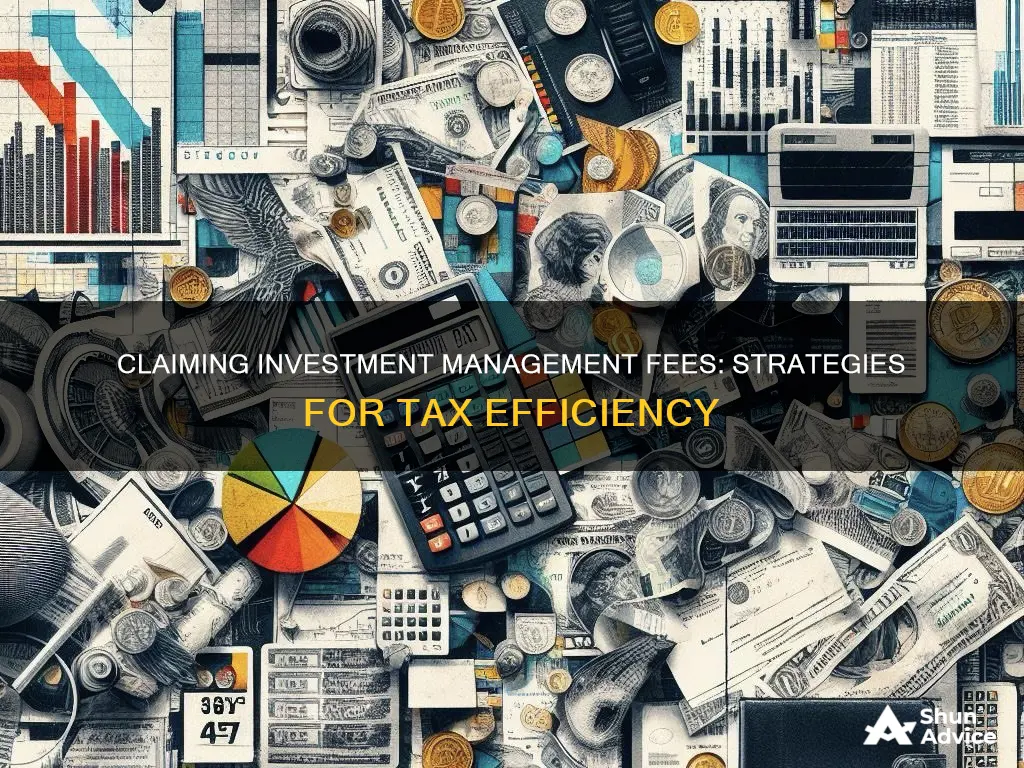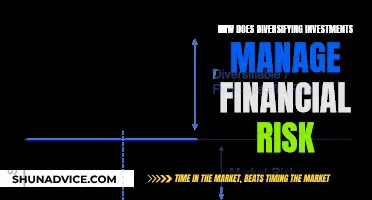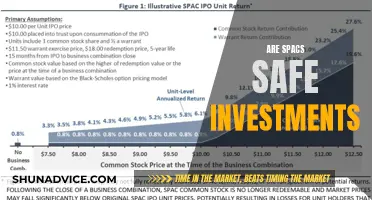
Investment fees can be claimed on your tax return, but it depends on the type of account and the purpose of the investment. Carrying charges are expenses incurred to earn investment income in non-registered accounts, including fees for managing investments and certain investment advice. These can be claimed on Line 22100 of your tax return. However, fees for registered accounts like RRSPs, TFSAs, RRIFs, and RPPs cannot be claimed. Additionally, interest incurred for investing in non-registered accounts may be deductible if the investment can generate dividends or interest.
| Characteristics | Values |
|---|---|
| Where to claim investment management fees | Line 22100 – Carrying Charges and Interest Expenses on your tax return |
| Investment fees that can be claimed | Fees to manage or take care of your unregistered investments, fees for certain investment advice or for recording investment income, fees to have someone complete your Income Tax Return if you have income from a business or property, interest you pay on money you borrow for investment purposes to earn investment income |
| Investment fees that cannot be claimed | Any subscription fees paid towards financial magazines, newsletters or newspapers, any interest paid on money you borrowed for contributions to your registered investments, any commission or brokerage fees paid from buying or selling securities, any legal fees paid to your lawyer for a divorce or separation agreement or to obtain custody of your child, safety deposit fees |
What You'll Learn

Claiming fees for unregistered investments
When it comes to claiming fees for unregistered investments, there are a few key things to keep in mind. These expenses are classified as "carrying charges and interest expenses" and are incurred for the purpose of earning investment income. However, it's important to note that only expenses for non-registered accounts qualify for tax deductions.
So, what does this mean for your unregistered investments? You can claim fees to manage or take care of these investments, as well as fees for certain investment advice or for recording investment income. This includes fees for ongoing investment management, but it's important to note that transaction fees, commissions, and sales charges cannot be deducted. These acquisition and selling costs are instead used to calculate your capital gains or losses when the investment is sold.
It's also worth noting that fees for registered accounts, such as RRSPs, registered retirement income funds, registered pension plans, segregated funds, or tax-free savings accounts, are specifically not tax-deductible. This is because the income in these accounts is not taxable, so costs related to earning that income are also non-deductible.
To claim these fees for unregistered investments, you can report them on the Federal Worksheet in all provinces except Quebec. For Quebec, you would report these carrying charges on Schedule N. Remember to keep proper documentation in case it's needed later.
Understanding Investment Analysis and Portfolio Management
You may want to see also

Claiming fees for registered investments
Registered investments refer to tax-sheltered accounts, such as Registered Retirement Savings Plans (RRSPs), Registered Retirement Income Funds (RRIFs), Registered Pension Plans (RPPs), and Tax-Free Savings Accounts (TFSAs). Fees incurred in relation to these types of registered investments generally cannot be claimed on your tax returns. This includes management fees, financial planning fees, and fees for investment advice.
For example, in Canada, fees paid for services in connection with your RRSP, RRIF, or TFSA do not qualify as deductible carrying charges and interest expenses. This is because the income from these registered investments is typically tax-free or tax-deferred, so the associated fees cannot be claimed.
However, there may be certain exceptions or specific circumstances where you can claim fees related to registered investments. For instance, if you pay fees on a fee-based investment account that includes financial planning, these fees may be tax-deductible. Additionally, if you have a non-registered account with a digital investment platform, the management fees may be tax-deductible. Therefore, it is important to review the specific rules and regulations in your region and consult with a tax professional to understand the deductibility of your investment fees.
It is worth noting that investment fees incurred for non-registered investments may be tax-deductible. These include fees to manage or take care of your investments and fees for certain investment advice. These expenses are classified as "carrying charges and interest expenses" and can often be claimed on your tax returns, provided they meet the eligibility criteria.
What Counts as an Asset in Your Investment Portfolio?
You may want to see also

Claiming fees for tax-free savings accounts
Tax-free savings accounts (TFSA) are a great way to save or invest money without paying taxes on any gains. However, it's important to be aware of the fees associated with these accounts, as they can eat into your profits. Here's a guide to claiming fees for tax-free savings accounts:
Understanding Carrying Charges and Interest Expenses
Carrying charges and interest expenses are fees you incur for the purpose of earning investment income. These expenses are tax-deductible, but only if they are related to non-registered accounts. In Canada, you can report these expenses on Line 22100 – Carrying Charges and Interest Expenses of your tax return. This includes fees for managing or taking care of your investments, certain investment advice, and recording investment income. However, it's important to note that registered accounts like RRSPs, RRIFs, and TFSAs do not qualify for these deductions.
Annual Administration Fees
When choosing a financial institution for your TFSA, be mindful of annual administration fees. These fees are common with tax-sheltered accounts like RRSPs and TFSAs because they require financial institutions to maintain extensive records and report to the Canada Revenue Agency. Banks typically do not charge annual administration fees for TFSAs, but their brokerage divisions might. Be sure to inquire about these fees before opening an account.
Withdrawal Fees
Another fee to consider when choosing a TFSA provider is the withdrawal fee. One of the key features of a TFSA is the ability to withdraw money and recontribute it later without tax consequences. However, some financial institutions charge a fee for each withdrawal you make. This can add up, especially if you anticipate making frequent withdrawals.
Investment Vehicle Fees
The type of savings or investment vehicle you use for your TFSA will also impact the fees you pay. For example, a conservative TFSA using GICs, high-interest accounts, or mutual funds sold by banks may not incur annual administration or withdrawal fees. On the other hand, if you opt for a full-service or discount brokerage, you may be charged an annual fee, typically around $50. However, these fees are often waived if you have a certain amount of total assets with the institution, such as $100,000.
Other Considerations
When evaluating TFSA fees, consider the impact they will have on your overall investment returns. For instance, a $50 fee on a $5,000 contribution is like a 1% penalty. Additionally, be cautious of institutions that charge fees for multiple withdrawals, as this could significantly reduce the value of your TFSA. Remember to ask about all applicable fees before signing up for an account and carefully review the terms and conditions.
Savings and Planned Investments: What's the Difference?
You may want to see also

Claiming fees for investment advice
When it comes to claiming fees for investment advice on your tax return, there are a number of things to consider. Firstly, it's important to understand the difference between registered and non-registered investment accounts. Fees related to accounts that are tax-sheltered, such as RRSPs, RRIFs, pensions, or RESPs, are generally not tax-deductible. On the other hand, fees for non-registered investment accounts, like non-registered investment accounts, may be deductible.
Carrying Charges and Interest Expenses
One type of fee that you may be able to claim is called "carrying charges and interest expenses". Carrying charges are expenses incurred for the purpose of earning investment income. This includes fees to manage or take care of your investments and fees for certain investment advice. However, it's important to note that only fees for non-registered accounts qualify as carrying charges. Fees for registered accounts, such as RRSPs and TFSA, do not qualify.
Investment Advice Fees
Investment advice fees may be tax-deductible if they are related to a specific investment that produces assessable income. For example, fees for arranging a loan may be deductible if the loan is for an investment property, but not if it is for a private residence. Fees for managing your existing investment portfolio may also be deductible, but again, they must relate to earning income. If the fee includes advice on insurance premiums or management of private loans, only a portion of the fee may be deductible.
Other Considerations
It's worth noting that fees for financial planning and advice-only financial planners are generally not tax-deductible. However, if you paid fees on a fee-based investment account that includes financial planning, these fees may be deductible. Additionally, mutual fund management fees are tax-deductible in non-registered accounts, while commissions or trading fees for buying stocks and other investments are not.
Location-Specific Information
The process for claiming investment fees may vary depending on your location. For example, in Canada, eligible expenses can be claimed on Line 22100 – Carrying Charges and Interest Expenses. In Quebec, carrying charges are reported on Schedule N, while in all other provinces, they are reported on the Federal Worksheet.
Understanding Investment Strategies: Model Portfolios Explained
You may want to see also

Claiming fees for tax returns
When preparing your tax returns, there are several types of investment management fees that you can claim as tax deductions. These include fees for advice on buying or selling specific shares or securities, as well as fees for the administration or management of securities you hold.
To be eligible for a tax deduction, the fees must be reasonable and paid to a person or entity whose principal business involves providing advice on buying or selling specific securities or includes the administration or management of securities. These criteria are outlined in paragraph 20(1)(bb) of the Income Tax Act (ITA).
It is important to note that not all investment-related fees are tax-deductible. Commissions paid on the trading of stocks and ETFs, transaction fees for purchasing and selling investments, fees for general financial counselling or planning, and subscription fees for financial magazines and newspapers are generally not deductible. Additionally, fees associated with registered accounts, such as Tax-Free Savings Accounts (TFSAs) and Registered Retirement Savings Plans (RRSPs), are also not tax-deductible.
When claiming investment management fees on your tax returns, report them as "carrying charges and interest expenses" on Line 221 of your tax return. This line is typically used to claim management or safe custody fees, investment counsel fees, and similar expenses.
Remember to review the specific rules and regulations for your country or region, as tax laws may vary. Consulting with a tax professional or financial advisor can help ensure you are taking advantage of all the applicable tax deductions and credits available to you.
Strategic Investment: Elliott Management's Secrets to Success
You may want to see also
Frequently asked questions
You can find investment management fees on your tax return on Line 22100 (previously known as Line 221 until the 2019 tax year).
Investment management fees can be claimed on your tax return on Line 22100 – Carrying Charges and Interest Expenses. You can also claim them on the Statement of Investment Income, Carrying Charges, and Interest Expenses page.
You can claim fees to manage or take care of your unregistered investments. Fees for certain investment advice or for recording investment income are also claimable.







